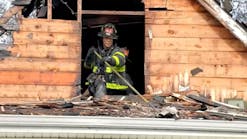At a recent breakfast with fire marshals from neighboring communities, the topic of staffing options for their fire prevention bureaus was discussed. It seems the fire departments use different options for staffing their fire prevention bureaus. Each option offers advantages and disadvantages. One thing was apparent: there are a number of staffing options to choose from. The challenge is choosing the best staffing option for your department's fire prevention bureau that will meet the needs of the community you serve and fit the fire department's organizational structure and culture.
Before we discuss fire prevention staffing, we need to consider fire prevention services and organizational structures. A fire prevention bureau manager, fire marshal or fire chief needs to first evaluate where the functions of the division fit into the overall organization before he or she can determine staffing options. The best way to accomplish this is to take a critical look at the mission statement of the fire department. It is essential that the fire prevention services are part of the organization's mission. When the fire department's mission statement includes the roles of the fire prevention bureau, it informs the entire community (customers) of the significance of the bureau. The duties of the fire prevention bureau must not be structured to function independently within the fire department, but to function with the other divisions of the organization. Just like the private sector, each division of the organization must share in the overall mission.
The services provided by a fire prevention bureau will differ from community to community. In some locations, the fire prevention bureau may not be responsible for fire investigations or even fire and life safety education. However, we strongly encourage the fire prevention bureaus perform these functions:
- Fire protection engineering or construction document review
- Fire and life safety education
- Fire inspection and code enforcement
- Public information responsibilities
- Pre-incident planning
- Fire investigations
- Occupant services (post-fire services, after the fire)
- Wildland risk management
- Training
The driving force of the size and complexity of a fire prevention bureau is dictated by the level of services it will provide to the community it serves. It is our firm belief the ideal structure of the fire prevention bureau should have the person responsible for the fire prevention bureau reporting directly to the fire chief. A direct report to the fire chief is critical to enable the chief to ensure the mission of the department and a strategic plan reflects the needs of the fire prevention bureau. This also ensures the fire chief is aware of the issues facing the fire prevention bureau that may involve him or her at a later date. (For an in-depth discussion of fire prevention bureau structures please see Establishing Fire Prevention Bureaus Part I and II by visiting http://cms.firehouse.com/content/contributor/bio.jsp?id=140 and the book Fire Prevention Applications by Lacey and Valentine available at Fire Protection Publications, Stillwater, OK.)
Fire prevention bureaus are in the service business. The greatest resource of any fire prevention bureau is its people. The old adage of the fire prevention bureau is a repository for the sick, lame and lazy is a thing of the past. The fire prevention bureau is no longer the dumping ground for troubled employees. There are no longer just three types of sprinklers and pipe scheduled designs! The complexity of the fire alarm and sprinkler systems combined with technological advances in performance-based design makes the fire prevention bureau one of the most technical positions in the fire department. The present demands placed on fire prevention bureaus call for a technically well-trained and motivated staff.
Options to staff the fire prevention bureaus can be from sworn personnel, civilian or the fire prevention services may be outsourced to a private company. There are advantages and disadvantages with each option. The key is to find which option or combination of options works for your community.
Sworn personnel may be assigned from shifts in a career department or a volunteer from a volunteer organization. Sworn personnel have an established relationship with the line or shift personnel. This relationship may help to integrate the fire prevention activities into the fire department operations. Usually, they have experience in structural firefighting in their community. They may not have the formal education to allow them to address the complexity of many of the fire prevention bureau issues faced today. Typically, their skill set is in suppression, not prevention.
In some cases, personnel are taken from the duties they like the most (suppression) and forced to perform fire prevention activities. This in itself may lean toward poor performance issues. In some cases, sworn personnel have the opportunity to work a suppression shift and then work in the fire prevention bureau on their days off. This can provide employees an opportunity to work in both environments. This option has benefits, but can be complicated by labor contracts.
Civilian personnel may not lack the suppression skill set the sworn personnel possess. It is truly a benefit to understand what issues the firefighters will face when called to fight a fire in the building. Keep in mind fire codes are both for firefighter and building occupant safety. In most cases, civilian personnel can be hired at a cost savings to hiring an additional firefighter. Civilians can be hired for a job with a specific skill set or educational requirement such as fire protection engineer. Because of the limited promotional opportunities and pay, some fire departments experience a high turnover of civilian fire prevention personnel.
Another frequently used practice to reduce workloads and defer cost is to outsource services through privatization. This is the transfer of the government function or duties to a private organization. Duties such as construction document review can be performed by a private company with fire protection engineers and be used on a cost-recovery basis. This option is good for departments that cannot afford to have a fire protection engineer on staff or where the workload does not substantiate a full-time position. Among the disadvantages of outsourcing services are that the department can lose ownership of the project and the third-party agency may not have a grasp of the entire history of the project.
Whether the fire department uses civilians or sworn personnel or outsources its staff, it must attract, motivate and retain fire prevention bureau personnel. Nothing is more frustrating to a fire prevention bureau manager than having a good employee spend only a few years in the bureau before he or she is transferred back to shift work or leaves the department for another fire prevention bureau job. Considerable time and money is spent training the individual. Typically productivity is less during the first few months of training. Losing an employee has a large impact on the division as well as an impact to relationships developed with other important agencies and departments that contribute to the fire protection of a community, such as the building and planning departments. Many employees don't just leave an organization to increase their salary. Recent studies are showing quality of life and the ability to meet family demands play a significant factor in job selection.
One way to attract and retain employees is the use of alternative scheduling such as compressed work weeks and the use of flex time. Compressed work weeks let the individual perform the equivalent of one week's work in fewer than five days. Compressed work weeks can achieve many work-scheduling objectives such as improving recruitment and decreasing turnover, increasing employee loyalty, extending customer service hours, improving scheduling flexibility and increasing the opportunity for the employees to further their education. Flex time also allows the individual to meet educational needs or other family demands. Flex time lets the individual alter his or her daily schedule as long as the total weekly hour requirement is met. Improving a person's quality of life and ability to meet family demands can outweigh salary benefits for many perspective employees.
Even with some of the disadvantages that can arise from alternative work schedules, they attract sworn individuals used to the traditional fire department 24-hour work schedule. The change to a 40-hour week from shift hours may drastically impact a person's family life. It is difficult for many to leave the shift schedule and still meet many of their family obligations.
The best staffing and recruitment options lie with the ability to understand what services the department must provide and what skills the existing personnel have to provide those services. In many cases, it is best to use a combination of each of the options in building your fire prevention bureau. Sworn personnel can bring the skill set of understanding the operations of the fire department and certain civilian personnel may be able to complement the division with his or her formal education or specialized fire prevention technical skills.
As fire prevention bureaus continue to evolve in to one of the most complex technical service of the fire department, it is critical to be able to have the best person for the job based on his or her ability, not their sworn or civilian status. In order to recruit and retain great fire prevention employees, fire departments must look beyond traditional 40-hour work weeks and focus on human resource programs found in the private sector.
Contributions to this column were made by Fire Marshal Jerry Howell of the Lombard, IL, Fire Department and Assistant State Fire Marshal Tonya Hoover of the State of California.
BRETT LACEY is the fire marshal for the Colorado Springs, CO, Fire Department. He is a professional engineer and certified safety professional and has served on various technical committees. Lacey has over 27 years experience in the fire service in both a professional and volunteer capacity as a nationally registered paramedic, firefighter and fire protection engineer. PAUL VALENTINE is fire marshal for the Mount Prospect, IL, Fire Department. He has a bachelor of science degree in fire protection and safety engineering technology from Oklahoma State University and a master of science degree in management and organizational behavior from Benedictine University. Valentine is a graduate of the National Fire Academy's Executive Fire Officer Program and has served on many International Fire Service Training Association (IFSTA) committees and is a member of the IFSTA Executive Board. He is also a principal committee member of the NFPA 1037 Fire Marshal Professional Qualification Standard. Lacey and Valentine are co-authors of the textbook Fire Prevention Applications, published by Fire Protection Publications. Their previous article "Fire Prevention: It's Not Just for One Week a Year" was published in the November 2007 issue.





